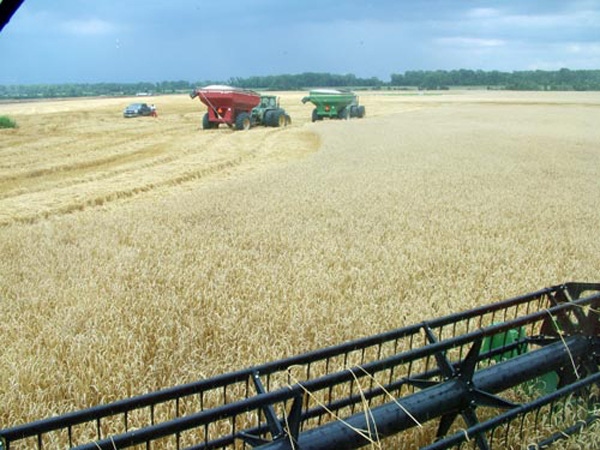January 19, 2015

The U.S. Department of Agriculture released key figures on Jan. 12 showing Arkansas wheat plantings for the 2015 crop dropping off 16 percent from 2014. Scott Stiles, an Extension economist with the University of Arkansas System Division of Agriculture, said that 465,000 acres of wheat planted in the fall of 2013 were harvested across the state last June. In comparison, only 390,000 acres were planted during the October-November planting window this past fall.
Stiles said the decline, while significant, was smaller than he and other analysts had expected. “In the fall, we knew the acreage would be down,” Stiles said. “We were looking for a decline of 20-25 percent, but the USDA numbers didn’t show that much of a cutback.”
Stiles said the decision to plant less of a given crop, relative to other crops is typically driven by market prices, and the 2014 decline was likely no exception.
“At planting, the bids growers were offered for the 2015 crop were near $5.50 to $5.65 per bushel,” Stiles said. “If you go back to fall of 2013, new crop 2014 bids were in the $6.60 to $6.70 range.”
According to the USDA’s National Agricultural Statistics Service, Arkansas growers produced a record-breaking yield of 63 bushels of wheat per acre in 2014. Stiles said comfortable supplies of the crop likely contributed to growers’ decisions to plant less wheat this year.
“Increases in supplies of wheat for the U.S. as a whole, and the world, have pressured prices lower over the past year,” Stiles said. In updated numbers released Monday by USDA, U.S. 2014-15 ending stocks of soft red winter wheat are projected to increase to 170 million bushels, up from 113 million bushels the prior year.
“The global supplies of wheat are comfortable right now as well at 196 million metric tons, up from 185.8 metric tons in the previous marketing year. That’s another factor keeping prices down,” Stiles said.
You May Also Like




